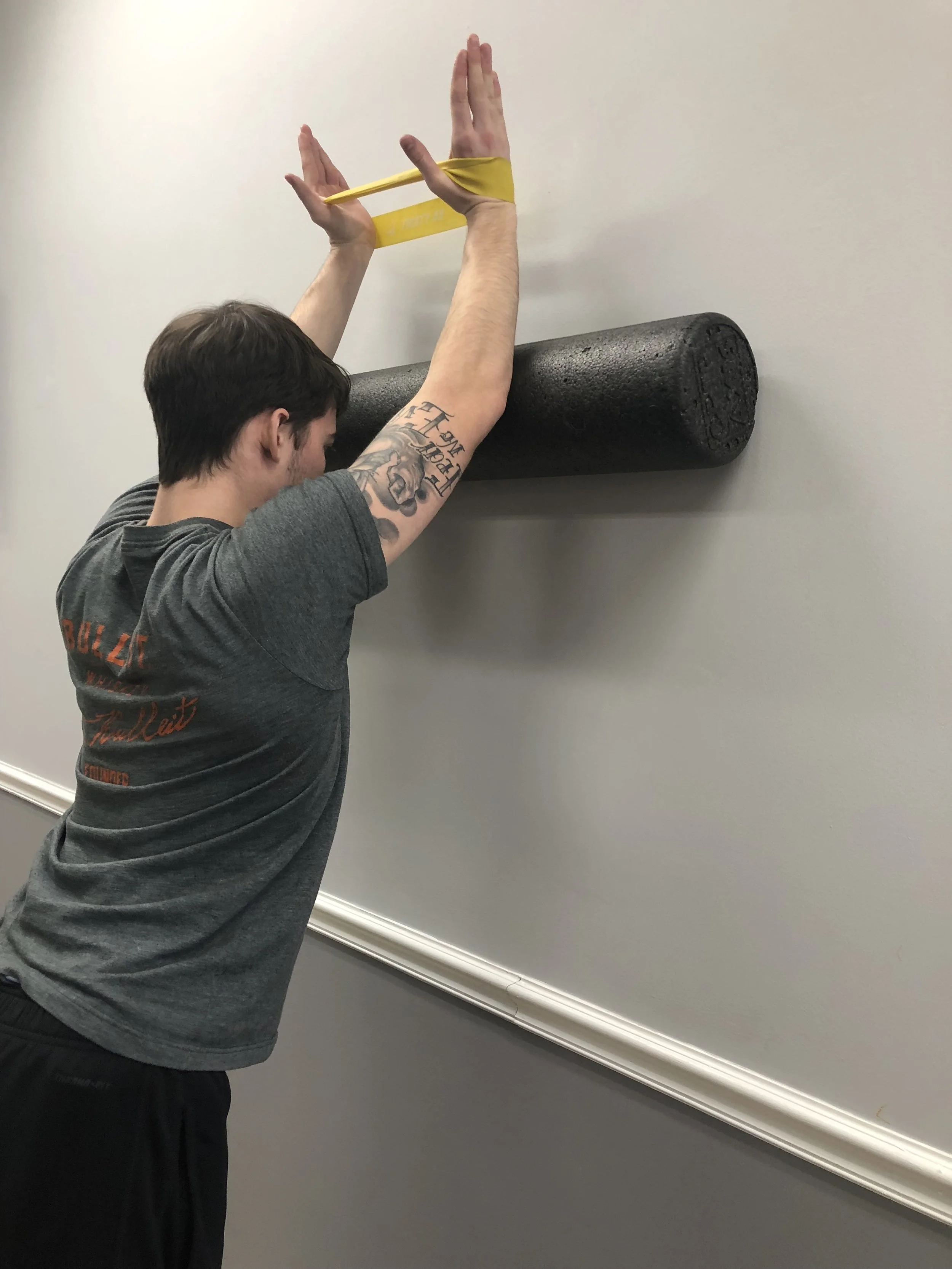Scapular Control: The Foundation of all Shoulder Movement
As a physical therapist shoulder injuries are a very common injury that I see in my office. Shoulder injuries are commonly associated with decreased motor control. Motor control refers to the ability to coordinate, appropriately time or produce symmetrical muscular contractions, a lack of this ability is sometimes associated with a diagnosis of ‘scapular dyskinesis.”
Scapular dyskinesis is a common diagnosis that is used today by many doctors and therapists alike, however it’s not a life sentence of pain! Some people may have impaired motor control of their scapula and have no pain! Everything is unique to your personal experience and condition.
Dr. Kibler from the Lexington Sports Medicine Center defines Scapular dyskinesia as “an alteration in the normal position or motion of the scapula during coupled scapulohumeral movements. It occurs in a large number of injuries involving the shoulder joint and … the inhibition or disorganization of activation patterns in scapular stabilizing muscles.” (1)
Addressing the dyskinesis has been shown to decrease impingement symptoms,43 improve rotator cuff strength,44 and decrease symptoms in labral injury. (2) This can be accomplished by Early activation of the weakened and inhibited lower trapezius and serratus anterior can be achieved through the scapular stability series.
Before going to the gym and performing that heavy military press you love try out these exercises to optimize your scapular control. Your ability to produce tension and control the movement patterns can help lead to better moving and pain free shoulders. So the next time you head to the gym, or to perform any overhead activity, incorporate these three shoulder exercises into your next warmup to learn how to best control your scapula:
Scapular Push ups:
Set up in a high plank position with your hands under your shoulders and your feet together. Your body should be in a nice straight line from head to your heels.
Without bending your elbows or dropping your pelvis, pinch your shoulder blades together and press your chest out.
Then, press into the floor attempting to raise your upper back as high as you can, without arching. This is a very small range of motion where you are simply focused on pinching your shoulder blades and spreading them apart.
Reminders!
Remember, you are not doing a push up.
Keep your core tight as you pinch your shoulder blades together. As you get stronger and build the mind-body connection you will find your range of motion increases.
Prescription
Do two sets of 10 reps, progress to 3 sets of 15 reps over time.
If you have discomfort or are unable to complete the movement, attempt this exercise on the wall before the floor, this will decrease the weight and thus the amount of strength and control required to complete the movement.
Scapular Pull ups-
Begin in a dead-hang position with a palms-away grip and hands shoulder-width apart.
From a dead-hang, you want to draw the scapula down and together, thus raising your body slightly but without bending your arms as in a regular pull-up.
Hold the top position for one second, then return to the starting position. The range of motion is only a few inches to a foot or two (when you get really strong!). (can it get that much ROM????)
Reminders!
Try to “bend the bar” and think about doing a reverse shrug (i.e. shoulders drawn downward). Do this, and you’ll feel your head shift backward and your chest raise upward, as your scapula pinch together.
Do not let your elbows bend
Prescription
6 -12 reps, keeping nearly straight arms and tight core throughout. At first you may find this to be a difficult exercise (a sign that you’ve found something to work on!) But, resist the urge to do too many
Try two to three sets with a minute rest in between (rationale for 3 minute rest?)
If you have discomfort or are unable to complete this exercise place a chair under you and use one foot to off load your arms
Foam Roller Shoulder Flexion with Band (Serratus Anterior):
Begin by placing a foam roller on the wall with a band around both of your wrist. You will place your wrists on the foam roller about chest high.
Then gently lean into the foam roller, while creating tension through the band and rolling the foam roller up the wall.
Make sure you keep both arms parallel to each other and maintain constant outward tension through the bands.
Prescription:
Do 2 sets of 10 Reps slowly
Keep moderate tension on the band throughout the range of motion, if you notice you cant complete the reps or have pain reduce to mild tension or adjust the difficulty of band you are using.
Written By: Dr. Joseph Caprioli, PT, DPT, MCMT
Dr. Kibler is Medical Director, Lexington Sports Medicine Center, Lexington, KY. Mr. McMullen is Manager, Sports Medicine and Physical Therapy, Lexington Sports Medicine Center.
The Disabled Throwing Shoulder: Spectrum of Pathologyd10-Year Update. W. Ben Kibler, M.D., John E. Kuhn, M.D., Kevin Wilk, P.T., D.P.T., Aaron Sciascia, M.S., A.T.C., N.A.S.M.-P.E.S., Stephanie Moore, M.S., A.T.C., Kevin Laudner, Ph.D., A.T.C., Todd Ellenbecker, P.T.,
Chuck Thigpen, Ph.D., P.T., A.T.C., and Tim Uhl, Ph.D., A.T.C., P.T., F.N.A.T.A.





